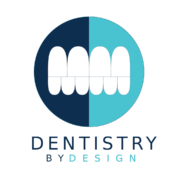There is a location in the center of Midwest City, Oklahoma, that honors the past while welcoming the promise of the future. Heritage Park Mall, sometimes known as “Heritage Mall,” is more than just a shopping complex; it is a representation of the history, resiliency, and possibility for revitalization of the neighborhood.
A Nostalgic Location
Heritage Park Mall has a particular place in the hearts of many Midwest City locals. In this location, loved ones shopped for school supplies, friends got together for ice cream, and couples strolled hand in hand. The history of the mall is intricately entwined with the life of the neighborhood it served.
A Remarkable Landmark
When Heritage Park Mall first opened its doors in 1978, Midwest City rapidly embraced it as a beloved landmark. It stood out in the area thanks to its unusual construction, which included a central dome and extensive interior landscaping. It served as a hive of retail activity and a representation of the city’s development and wealth for many years.
The Altering Environment
The retail landscape started to change as the years went by. Heritage Mall and other conventional retail complexes faced difficulties as a result of the growth of e-commerce and shifting consumer preferences. The difficulties experienced by brick-and-mortar retailers across the nation were made clear by empty storefronts.
Keeping the Legacy Alive
The neighborhood’s ties to Heritage Park Mall persisted in spite of the changes. Stories, images, and the shared memories of individuals who had traversed the mall’s halls were used to preserve its memory. It began to represent resiliency and serve as a reminder that the past and future might coexist.
Community Goals
The debate over Heritage Park Mall’s future has picked up steam in recent years. The possibility of reviving the area and bringing it back to its previous splendor has been discussed by the community. Despite obstacles, there is a common vision for the mall’s transformation into a bustling, mixed-use location that serves as the city’s focal point.
Innovative Reuse Possibilities
Repurposing old buildings for new purposes is a crucial component of the adaptive reuse strategy that will be used to revitalize Heritage Park Mall. Using adaptive reuse enables the area to be given new life while preserving its historical and architectural features. It could include anything from residences and workplaces to entertainment venues and community facilities.
Bringing Retail Back
Reviving Heritage Mall’s retail component is a key objective of the redevelopment initiatives. This includes luring a variety of companies that serve the needs and interests of the neighborhood. Heritage Mall can regain its status as a retail hotspot by delivering distinctive goods and services and constructing appealing shopping experiences.
Space for Community Gatherings
The Heritage Park Mall has the potential to develop into a vibrant community meeting place rather than only a shopping mall. The mall could become a focal point for cultural events, festivals, and neighborhood activities with the addition of plazas, outdoor seating, and event spaces. Residents would congregate there to commemorate their common heritage and make new memories.
Preserving Cultural Heritage
It’s crucial to respect Heritage Park Mall’s cultural and historical relevance as the rehabilitation plans develop. The unique dome, one of the mall’s original design features, can be kept as a reminder of the building’s history and continuity. The history of Midwest City’s development could potentially be revealed through art displays and installations.
Ecological Design
The renovation of Heritage Park Mall gives a chance to use sustainable design principles in a time when environmental awareness is becoming prevalent. Green spaces, energy-efficient lighting, and environmentally friendly building materials can all help to create developments that are more environmentally conscious and progressive.
Participating in Community
Active community involvement is necessary for the revitalization projects to be successful. The future of Heritage Mall will be shaped in large part by feedback from locals, business owners, and community organizations. Public forums, polls, and teamwork training can promote inclusion and a sense of ownership in the decision-making process.
Public-Private Alliances
Public-private collaborations might be needed to revitalize Heritage Park Mall in order to get the financing and know-how. Local government, developers, and community organizations can pool their resources and expertise by cooperating to give the area new life.
Conclusion
The Heritage Park Mall in Midwest City, Oklahoma, is a monument that captures the past and present of the community. Despite obstacles, there is a shared vision for the mall’s redevelopment into a lively, mixed-use destination that captures the character and aspirations of the neighborhood. The past is revered, the present is welcomed, and the future is envisioned there. Heritage Park Mall serves as a testament to tenacity, showing us that we can preserve our history while creating a better future if we are determined and work together.

